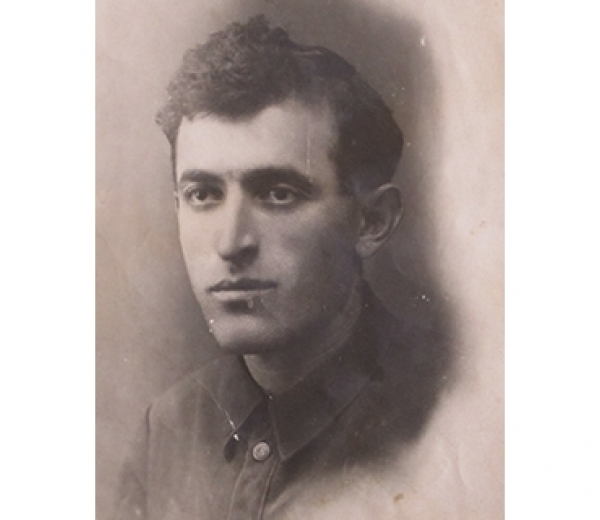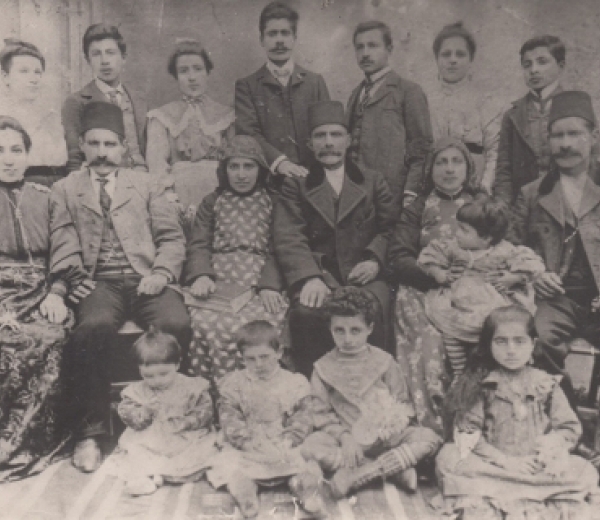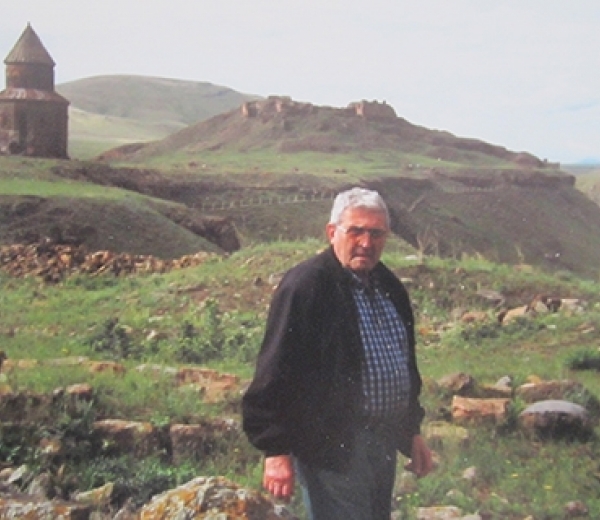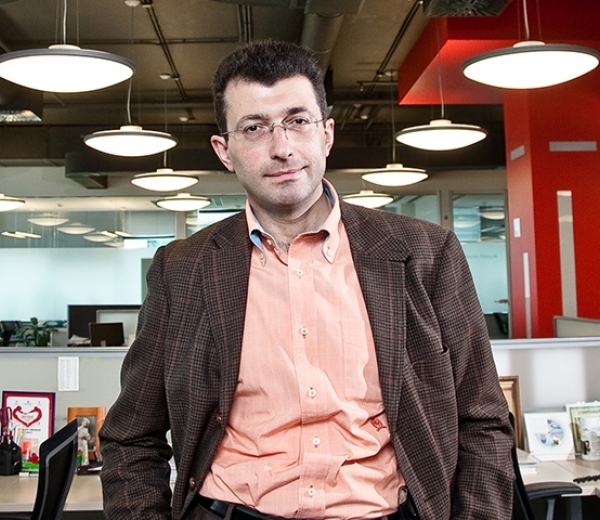Arman Voskerchyan
Arman was responsible for strategic planning at Johnson & Johnson, while at Philips he made it all the way to CEO for Russia and the CIS. “My sense of purpose and perseverance comes from my ancestors. Their will was forged by their difficult fate. They survived the Genocide,” Voskerchyan explains.
Scarred for life
The Voskerchyan family hails from the Sassoun province, whose residents were famed for a special kind of courage and resilience. When the first Armenian pogroms rolled through Ottoman Turkey in 1894, Sassoun was the principal center of resistance. Arman Voskerchyan’s ancestors were among the rebels.
His great-grandfather, Tonapet Voskerchyan, was an educated socialite. At the beginning of the 20th century he was working for the treasury in the small town of Gazo. In May 1915 he was warned of the impending danger by some Kurdish friends. Unlike many of his townsmen, Tonapet took the advice seriously and immediately got his family ready to leave. They ran away, taking only their most treasured possessions with them.
Within days of their departure, their home town was the scene of a series of massacres.
Tonapet, with his wife, son Pogos and daughter Alis joined a caravan that was traveling toward Kars, a safer place under Russian military control.
On the way there, his wife fell gravely ill. The family was forced to leave her in one of the Armenian churches along the road. Tonapet never saw his wife again: the next day, shocking news came. A Turkish cavalry detachment locked up the Armenians who sought shelter in the church and set the building ablaze. Not wanting to upset the children, Tonapet kept her fate to himself.
The party was dwindling. Dozens of people wasted away, killed by hunger and sickness. An outbreak of black smallpox cut down the refugees. The only protection for the children was to wear necklaces of garlic cloves, but that couldn’t save eight-year-old Pogos from the deadly disease.

|
Pogos Voskerchyan, Arman’s grandfather |
It was too dangerous to delay and Pogos could barely walk. He was also infectious and posed a risk to the other children. Tonapet made the difficult decision to leave his son behind with only a tree for shelter. As he left, he begged his child to stay there and wait, promising to return as soon as he could. When the traveling party reached the relative safety of the Araz River, Tonapet headed back to find his son. For several days he retraced his steps, rejoicing when he eventually found Pogos waiting under that same tree. The little boy was seriously ill, but still alive.
Tonapet nursed Pogos for a long time.
Together, their willpower helped the boy overcome the killer disease.
He recovered, but the scars of the pox remained for the rest of his life. “I was seven years old when I asked my grandfather why his whole face was scarred,” says Arman. “That was when my grandfather told me the terrible story of his salvation. It was only then that I began to imagine the scale of the tragedy that befell our people.”
Tonapet and his children settled in the village of Udzhan in Armenia’s Ashtarak district. Pogos graduated from the local economics training school, then went on to the School of Economics at Yerevan State University before going on to complete his Ph.D. thesis. Professor Voskerchyan taught at the university, becoming the dean of the School of Economics. Later he completed his post-doctoral thesis, but politics ensured it was never formally approved: Voskerchyan was a harsh critic of errors made during the electrification process in Armenia.
“My grandfather was a wise man. He was always very philosophical,” Arman says. “I noticed that despite everything that happened to him, he didn’t hate the Turks. He considered them victims of the criminal policies of a group of scoundrels who managed to seize power. And he always spoke with deep respect of those Muslims who helped our family to survive. I am also grateful to them. If it wasn’t for them, I wouldn’t be here today.”
More powerful than swords
Back when he was still a young man, Pogos Voskerchyan met his future wife, Granush Agayan, who was a Komsomol leader in the neighboring village. She was also a refugee and had survived terrible hardships. The Agayan family used to live in Van, the largest city in Eastern Anatolia and an important cultural and economic center in Western Armenia.

|
Gabriel Agayan with his wife Varduhi (top row, forth and third from the left) and other members of the family, including his father Manuk Agayan and his wife (center). |
Granush’s father, Gabriel, was the best-known jeweler in Van. His skillful fingers and business acumen helped him amass a significant fortune and he won the respect of his Armenian neighbors and the Kurds who lived in Van’s Muslim district. In 1915 one of those Kurds warned him that the pogroms would hit the city the very next day. With no time to pack, the family fled in the dead of night. Somewhere along the way Gabriel bought horses to carry his own family and other Armenian refugees who joined the exodus. After several days’ hard riding the horses were exhausted, but there could be no rest. Gangs of Kurdish brigands or detachments of the Turkish army could fall upon the convoy at any moment. Abandoning the horses, the refugees continued on foot.
“My grandmother was seven at the time,” says Arman. “She used to tell me how her mother sewed the hem of her skirt to the hem of her own dress, so that the little girl wouldn’t get lost. Her hands were full.” Unfortunately, little Granush’s mother died from a heart attack on the way. She was buried by the roadside.

|
Gabriel Agayan (first row, first from the right) |
Having escaped the pogroms, Gabriel and his daughter settled at Ashtarak. For a while the Agayans lived off the money they raised from selling the gems and jewelry they took with them from Van. Work was scarce, and for obvious reasons there was little demand for a jeweler. Gabriel Agayan used to make diamond necklaces and pearl bracelets, but in Soviet Armenia he found himself repairing kerosene lamps and mending copper bowls.
He didn’t grumble about his new circumstances and he worked so well that his clients were often willing to pay more than the agreed fee.
“I didn’t get to meet my great-grandfather, but our house is full of his wonderful creations — a decorated snuffbox in the form of a book; a carved jewelry-box; a fountain pen made out of an empty cartridge case,” says Voskerchyan.

|
Gabriel Agayan's jewelry hammer and a snuffbox made by him |
The salutary tree
Arman’s father, Emil, the son of Pogos and Granush, always dreamt of visiting the land of his ancestors. Last year his dream finally came true. At the age of 76 he went to Western Armenia, walked along the shores of Lake Van and in the mountains of Sassoun. In the town of Gazo, Emil found his father’s home. He couldn’t be completely sure that this was the Voskerchyan family’s house, but it looked very similar to the one described by his father Pogos.

|
Emil Voskerchyan in Ani |

|
Arman Voskerchyan |
Arman hired professionals to do this. It took a year for his team of experts to interview all the surviving members of the Voskerchyan and Agayan families, to trawl the public archives of Turkey, Armenia and Russia, and to consult with historians and ethnographers.
Their work resulted in a heavy tome, full of photographs, maps, birth certificates and other documents. Why does a successful businessman need this weighty relic of the past? “I think an instinct for self-preservation explains it best,” Arman says. “It was my attempt to protect myself and my descendants from assimilation and from losing our connection to the roots that nourish us. Who is anyone without his roots?”

